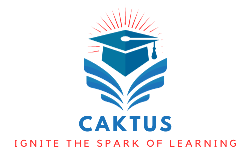
Blockchain Explained: Understanding the Future of Digital Transactions
Blockchain technology has emerged as a revolutionary force in various industries, from finance to healthcare and beyond. But what exactly is blockchain, and how does it work? In this article, we will provide a comprehensive overview of blockchain explained, breaking down its core components, functionality, and potential applications.
What is Blockchain?
At its core, blockchain is a decentralized, distributed ledger technology that securely records transactions across multiple computers. This means that no single entity has control over the entire network, and all participants can access the same information. Each transaction is grouped together with others into a “block,” which is then linked to the previous block, forming a “chain.” Hence the term “blockchain.”
This structure ensures that once data is recorded on the blockchain, it is nearly impossible to alter or delete. Blockchain technology relies on cryptographic techniques to secure the data, making it an attractive option for businesses and individuals looking for transparent and tamper-proof systems.
Key Components of Blockchain
When discussing blockchain explained, it’s essential to understand its key components. The primary elements of a blockchain include blocks, nodes, and miners:
- Blocks: Each block contains a set of transactions and a reference to the previous block, along with a unique cryptographic hash. This hash ensures that any attempt to modify the block will be immediately detectable.
- Nodes: These are the individual computers that make up the blockchain network. Each node has a copy of the entire blockchain, allowing it to verify and validate transactions independently. This decentralization enhances security and reduces the risk of a single point of failure.
- Miners: In many blockchain systems, especially those like Bitcoin, miners are responsible for validating new transactions and adding them to the blockchain. This process involves solving complex mathematical problems, which requires significant computational power. Miners are rewarded with cryptocurrency for their efforts, incentivizing them to maintain the network’s integrity.
How Blockchain Works
Now that we’ve covered the basic components, let’s delve into how blockchain works. When a transaction is initiated, it is broadcasted to the network, where nodes verify its authenticity. This verification process involves checking that the sender has enough funds and that the transaction complies with the network’s rules.
Once verified, the transaction is grouped with others into a block. Miners then compete to solve the cryptographic puzzle associated with the block. The first miner to solve the puzzle gets to add the new block to the existing chain and is rewarded with cryptocurrency. This consensus mechanism ensures that all participants agree on the current state of the blockchain, maintaining its integrity.
After a block is added, the information it contains becomes a permanent part of the blockchain, accessible to all participants. This transparency fosters trust among users, as everyone can verify transactions independently.
Advantages of Blockchain Technology
When blockchain is explained, it’s important to highlight its numerous advantages. Here are some key benefits of using blockchain technology:
- Transparency: All participants have access to the same data, ensuring transparency in transactions. This openness helps build trust among users and reduces the likelihood of fraud.
- Security: The cryptographic techniques used in blockchain make it highly secure. Altering any information within a block would require changing every subsequent block, which is nearly impossible in a decentralized network.
- Decentralization: Blockchain eliminates the need for intermediaries, such as banks or payment processors, allowing for peer-to-peer transactions. This reduces costs and speeds up transaction times.
- Immutability: Once recorded, transactions on the blockchain cannot be altered or deleted. This feature enhances data integrity and accountability.
Applications of Blockchain
The potential applications of blockchain are vast and varied. Here are some notable areas where blockchain is making an impact:
- Finance: Blockchain is revolutionizing the financial sector enabling faster, cheaper, and more secure transactions. Cryptocurrencies like Bitcoin and Ethereum are prime examples of how blockchain is reshaping money.
- Supply Chain Management: Blockchain can enhance transparency and traceability in supply chains. By recording every step a product takes on the blockchain, businesses can ensure authenticity and prevent fraud.
- Healthcare: In healthcare, blockchain can securely store patient records and ensure that only authorized personnel have access to sensitive information. This could improve data sharing among providers while protecting patient privacy.
- Voting Systems: Blockchain technology can be used to create secure and transparent voting systems, reducing the risk of fraud and increasing voter confidence in election outcomes.
Challenges Facing Blockchain Technology
Despite its numerous benefits, buy crypto Australia technology is not without challenges. When blockchain is explained, it’s essential to address some of the obstacles it faces:
- Scalability: Many blockchain networks struggle to handle a large number of transactions quickly. As more users join the network, transaction speeds can slow down, leading to potential bottlenecks.
- Regulatory Uncertainty: As blockchain technology continues to evolve, governments are still figuring out how to regulate it effectively. This uncertainty can hinder adoption and investment in the technology.
- Energy Consumption: The mining process for cryptocurrencies, particularly Bitcoin, requires significant energy. This has raised concerns about the environmental impact of blockchain technology.
Conclusion
In summary, blockchain is a groundbreaking technology that has the potential to transform various industries. By understanding blockchain explained, we can appreciate its key components, how it works, its advantages, and its applications. While challenges remain, the ongoing development and adoption of blockchain technology promise to reshape our world in the years to come. As we move forward, it’s crucial to stay informed about blockchain’s evolving landscape and its impact on our daily lives.

